Today’s Current Affairs: 31st May 2025 for UPSC IAS exams, State PSC exams, SSC CGL, State SSC, RRB, Railways, Banking Exam & IBPS, etc
Table of Contents
Warrant of Arrest:
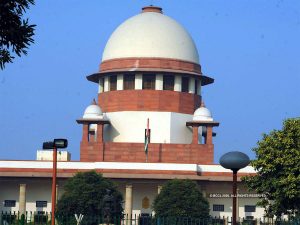
The Supreme Court recently clarified that when an arrest is made with a warrant, a separate communication of the arrest grounds isn’t required, as the warrant itself serves this purpose.
Warrant of Arrest:
- This is a written order issued by a judge or magistrate, supported by a sworn affidavit, authorizing the arrest and custody of a person accused of committing a specific offense.
- A police officer who executes the warrant shall notify the substance thereof to the person to be arrested and if he demands, shall show him the warrant.
- The officer is also obligated to promptly bring the arrested individual before the court without unnecessary delays.
- Valid Warrant:
- A warrant of arrest should be
- in writing
- signed by the presiding officer of the Court and
- should bear the seal of the Court.
- It should also contain the name of the accused, his address, the offence with which he is charged.
- If any of these factors is absent, the warrant is not in order, and an arrest made in execution of such a warrant is illegal.
- A warrant of arrest should be
- A bailable warrant is a Court’s order which contains a direction that if the person arrested executes a bail with sufficient sureties for his attendance before the Court, he may be released from custody.
- In that case it shall further state the number of sureties, the amount of the bond and the time for attending the Court.
- In case of a non-bailable warrant, the direction for bail will not be endorsed on the warrant.
- Arrest Without Warrant: A police officer is empowered to arrest a person without a warrant if there is reasonable suspicion of their involvement in a cognizable offense.
Invar Missile:

The Ministry of Defence is finalising a procurement order for 500 Invar anti-tank guided missiles (ATGMs) from state-run Bharat Dynamics Ltd. (BDL), with the deal expected to be worth between Rs 2,000 crore and Rs 3,000 crore.
- Invar Missile is an anti-tank guided missile (ATGM) designed to be launched from tank platforms.
- The Invar missile, capable of being fired from the barrel of T-90 tanks, has been in active deployment by Indian forces and is known for its long-range precision strike capability.
- The missile can neutralise adversaries tanks fitted with Explosive Reactive Armour Protection.
- The Invar missile is built by Rosoboronexport of Russia, and it is produced under license in India by Bharat Dynamics Limited (BDL).
- The missile is of semi-automatic control system, laser beam riding, and jamming immune.
- Equipped with a tandem warhead.
- Can destroy stationary and moving targets with speeds up to 70 kmph.
- Has a high hit and kill probability.
Mt. Khangchendzonga:
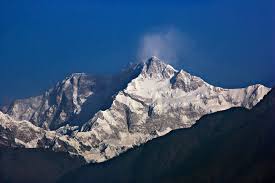
Sikkim Chief Minister recently urged the Centre to ensure that Mt. Khangchendzonga, the world’s third-highest peak, regarded as sacred by the people of the State, is made out of bounds for mountaineers.
- Khangchendzonga (also known as Kanchenjunga) is the highest peak in India and the third-highest peak in the world after Mount Everest (Chomolongma) in Nepal and K2 in Pakistan.
- It is situated in the eastern Himalayas on the border between Sikkim state, northeastern India, and eastern Nepal, 74 km north-northwest of Darjeeling, Sikkim.
- It has an elevation of 28,169 feet (8,586 metres).
- It is part of the Great Himalaya Range.
- The name Khangchendzonga has been variously translated as “Five Treasuries (or Strongboxes) of the Great Snow” or “Great Five-Peaked Fortress of Snow.”, a reference to its five separate summits.
- Kanchenjunga has four ridges extending north, east, south, and west. Between them are four glaciers: the Zemu (northeast), the Talung (southeast), the Yalung (southwest), and the Kanchenjunga (northwest).
- The mountain and its glaciers receive heavy snow during the summer monsoon season and a lighter snowfall during the winter.
- To the east, Khangchendzonga National Park in Sikkim is a mountain wilderness with a wide variety of animal species.
- Charles Evans in 1955 led a British expedition up the southwest face in the first successful ascent of Kanchenjunga.
Restoration of benefits under the Remission of Duties and Taxes on Exported Products:

The Government of India has announced the restoration of benefits under the Remission of Duties and Taxes on Exported Products (RoDTEP) scheme for exports made by Advance Authorization (AA) holders, Export-Oriented Units (EOUs), and units operating in Special Economic Zones (SEZs).
- It was introduced through an amendment to the Foreign Trade Policy 2015-20, and it became effective for exports starting January 1, 2021.
- The primary aim of this scheme is to offset the taxes and duties incurred on exported goods that wouldn’t otherwise be credited, reimbursed, or refunded in any way, and are integrated into the exported goods.
- It is designed to reimburse exporters for embedded duties, taxes, and levies that are not otherwise refunded under any other existing scheme.
- It is compliant with World Trade Organization (WTO) norms and is implemented via a comprehensive end-to-end digital platform to ensure transparency and efficiency.
- It was enforced to repeal and reduce taxes on exported products, thereby encouraging exports and increasing the number of exports in the country.
- The scheme will be administered by the Department of Revenue, Ministry of Finance.
- It replaced the Merchandise Export Incentive Scheme (MEIS), in response to the US challenging Indian export subsidies under the MEIS at the WTO.
- Tax reimbursement under RoDTEP Scheme:
- The Scheme provides a mechanism for reimbursement of taxes, duties, and levies, which are currently not being refunded under any other mechanism at the central, state, and local levels, but which are incurred by the export entities in the process of manufacture and distribution of exported products.
- This not only includes the direct cost incurred by the exporter but also the prior stage cumulative indirect taxes on goods.
Bow Echo:
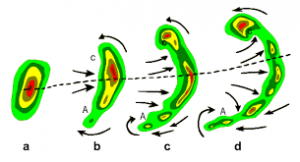
The intense storms that hit Delhi recently looked like a crescent or an archer’s bow which in technical terms are called as “bow echoes.”
- A bow echo is essentially a line of storms, also called a squall line, on the radar that looks like a bow.
- This squall line can sometimes be embedded in a larger squall line.
- A bow echo can extend from 20 km to 100 km, and last between three and six hours.
- The term was coined in the 1970s by Ted Fujita, a Japanese American meteorologist known for developing the scale to classify tornadoes.
- When rain-cooled air comes down to the ground, and spreads out horizontally. As this happens, a boundary called the gust front is created between the rain-cooled air and warm-moist air on the surface.
- This front pushes up the warm-moist air into the atmosphere, which forms new thunderstorms.
- These new thunderstorms produce more rain, thereby creating more rain-cooled air, which helps the gust front to maintain its strength.
Advance Authorisation Scheme:

Exporters may no longer be denied duty-free import benefits under the Advance Authorisation (AA) scheme simply because their goods were shipped before the licence was issued.
Changes:
- Even if goods have already been shipped or have arrived in India, they can still be cleared under an Advance Authorisation granted later by the DGFT, provided the importer files the Bill of Entry after the licence date.
- The relevant date for eligibility under the AA scheme is the date of filing the Bill of Entry.
- This is a legal Customs document submitted to Indian Customs to get the goods cleared, not the date of shipment from the foreign country.
- However, this relaxation won’t apply to restricted goods or products that can only be imported through designated government agencies, unless the DGFT gives special permission.
- Advance Authorisation is issued to allow duty-free import of input, which is physically incorporated in the export product (making normal allowance for wastage).
- The inputs imported are exempt from duties like Basic Customs Duty, Additional Customs Duty, Education Cess, Anti-dumping duty, Safeguard Duty and Transition Product-Specific Safeguard duty, Integrated tax, and Compensation Cess, wherever applicable, subject to certain conditions.
- An export obligation is usually set as a condition for issuing Advance Authorization.
- In addition to any inputs, packaging material, fuel, oil and catalysts which are consumed/utilized in the process of production of export products, are also allowed.
- The quantity of inputs allowed for a given product is based on specific norms defined for that export product, which considers the waste generated in the manufacturing process.
- The Directorate General of Foreign Trade (DGFT) provides a sector-wise list of Standard Input-Output Norms (SION) under which the exporters may choose to apply.
- Alternatively, exporters may apply for their own ad-hoc norms in cases where the SION does not suit the exporter.
- It is available to either a manufacturer exporter directly or a merchant exporter tied with a supporting manufacturer.
Ahilyabai Holkar:
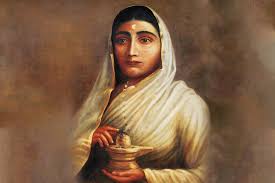
The Prime Minister will take part in a ‘Mahila Sashaktikaran Maha Sammelan’ event in Bhopal on the occasion of the 300th birth anniversary of legendary queen Ahilyabai Holkar.
- Maharani Ahilyabai Holkar (31 May 1725 – 13 August 1795) was a ruler of the Malwa territory, a part of the Maratha Confederacy, from 1767 to 1795.
- She served first as regent and then as ruler of the Holkar dynasty with its seats at Maheshwar and Indore in central India, in a period considered the zenith of the Holkar dynasty.
- Under her rule Malwa enjoyed relative peace, prosperity, and stability, and her capital, Maheshwar, was turned into an oasis of literary, musical, artistic, and industrial pursuits.
- She passed away on August 13, 1795, at the age of seventy.
- Upon her death, Ahilyabai was succeeded by Tukoji Rao Holkar, who abdicated in his son Jaswant Rao’s favor two years later.
- Jaswant Rao was the last Holkar ruler to remain independent until his 1804 defeat by and subsequent peace with the British.
- She is known as Punyashlok (“One as Pure as the Sacred Chants”).
- John Keay, the British historian, gave the queen the title of ‘The Philosopher Queen’.
- She was military-trained under her father-in-law, Malhar Rao Holkar, and personally led armies into battle.
- Ahilyabai appointed Malhar Rao’s adopted son, Tukoji Rao Holkar, the commander of the Holkar army.
- She earned a reputation for administering justice fairly during her rule, without partiality or partisanship. Ex: She sentenced her only son, found guilty of a capital offense, to death by being crushed by an elephant.
- She made Maheshwar (literally, “abode of Lord Shiva”) her capital and offered employment to several craftsmen, artists, and sculptors.
- She built hundreds of temples and Dharmashalas throughout India.
- Her most notable contribution was the renovation and repair of the famous Kashi Vishwanath Temple in 1780.
Biostimulant : Notified
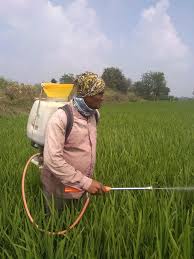
The central government notified 34 biostimulants to spur manufacturing.
- These are substances or microorganisms applied to plants or soil to stimulate natural processes and also work by enhancing the plant’s own physiological abilities.
- Biostimulants are products that reduce the need for fertilizers and increase plant growth, resistance to water and abiotic stresses.
- They improve overall plant health and productivity by targeting processes such as root development, nutrient efficiency, stress tolerance (drought, salinity, extreme temperatures), soil microbial activity.
- In addition, biostimulants applied to plants enhance nutrition efficiency, abiotic stress tolerance and/or plant quality traits, regardless of its nutrient contents.
- Common types of biostimulants include: Humic and fulvic acids, seaweed extracts, beneficial fungi and bacteria (e.g., mycorrhizae, rhizobacteria).
- In India Biostimulants are incorporated under the Fertilizer (Control) Order,1985.
Calotes zolaiking : Rare lizard species

Calotes zolaiking, a rare lizard species, was recorded for the first time in Meghalaya
- Calotes zolaiking is a species of garden lizard, was first described in 2019 from Mizoram’s Aizawl district by a team of scientists.
- These are about 5 inches long and their bodies are various shades of green with dark patches throughout. They are “strongly keeled,” meaning each of the lizard’s long scales has a ridge in the middle, giving it a sharper overall appearance.
- India is home to 14 species of Calotes, nine of which have been recorded in the
- Calotes are arboreal (tree-dwelling) lizards of the family Agamidae and are remarkable for their extreme colour changes when excited.
- They are diurnal, run fast on ground and swim in water.
- It is found in gardens and forests of India, Sri Lanka, Southeast Asia, and some Pacific islands.
- Their diet is made up of insects and other small invertebrates.
National Florence Nightingale Award 2025:
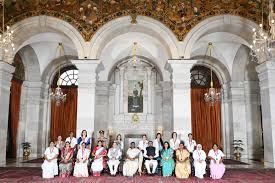
The President of India presented the National Florence Nightingale Awards for the year 2025 to the nurses at a function held at Rashtrapati Bhavan.
- It was instituted by the Ministry of Health and Family Welfare, Government of India in the year 1973.
- It is a prestigious award given to outstanding nursing personnel employed in Central, State/UTs and Voluntary Organizations.
- It was awarded as a mark of recognition for the meritorious services rendered by the nurses and nursing professionals to the society.
- The nurse in her/his regular job in the hospital or community settings, educational or administrative setting is eligible for the national award.
- It consists of a Certificate of Merit, Cash Award of Rs.1,00,000/- and a medal.
- Florence Nightingale was an English social reformer, statistician and the founder of modern nursing.
- Nightingale came to prominence while serving as a manager and trainer of nurses during the Crimean War, in which she organised care for wounded soldiers at Constantinople.




